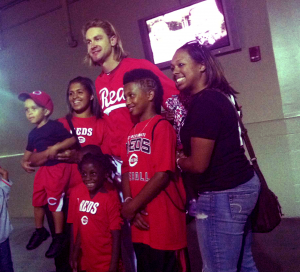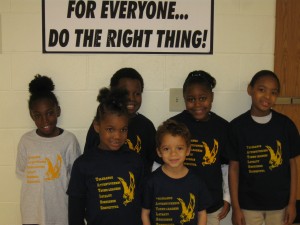Lisa Desatnik
My Thoughts On Taming A Pet Parrot
NOTE: I have a new pet behavior blog located at http://www.SoMuchPETential.com/blog. Thanks!
(one of my past Hyde Park Living columns)
Alright, I’ve got to speak my mind this month. I have heard so many people and seen so many web sites talking about ‘taming’ birds.
 Knowing what I know about behavior and being as compassionate as I am about other living beings, I hate that phrase. It makes me cringe actually because taming to me infers dominance and force. And dominance and force in no way helps build a relationship of trust and foster quality of life.
Knowing what I know about behavior and being as compassionate as I am about other living beings, I hate that phrase. It makes me cringe actually because taming to me infers dominance and force. And dominance and force in no way helps build a relationship of trust and foster quality of life.
Let me share some excerpts of ‘taming’ tactics suggested on web sites.
“If you make a fist and bend your wrist as far as it will go, you’ll notice that the skin on the back of the fist becomes very tight. Bring your fist up to the bird very slowly, finding out where its striking range is….The Fist, brought slowly toward the bird’s beak, can be used to control the bird, move it away from you, hold it off and let it know that you are not about to be driven out of the territory.”
“If your bird is so aggressive that you cannot safely place your hand inside its cage, try wearing thick oven mitts on your hands. If your bird bites the mitt, gently push in towards his beak rather than pulling away. This will eventually teach him that no matter how hard he bites you, he cannot make your hand disappear.”
“You have to expect the bites and be prepared to take them if need be..reacting to those bites is just about the worst thing you can do. Once the bird discovers that his bites WILL NOT back you down..he will stop trying.”
Let me repeat that with a BIG question mark. “Once the bird discovers that his bites WILL NOT back you down…he will stop trying.” REALLY? Some months back I devoted an entire column dispelling the reasons people use for why parrots bite. I’ve pulled a paragraph from it below.
Why then do birds bite humans? Well, for one humans who get bit generally aren’t very good listeners when it comes to watching their bird’s body language. They don’t allow their bird to nonagressively warn them to back off. Instead they push the limit and they have their body parts where they shouldn’t be (that’d be too close to a bird’s beak when the bird doesn’t want you there). They teach their birds that nonaggressive body language just doesn’t work in communicating to aggressive, grouchy or dominant humans.
I used to get bit, and bit hard, by Dreyfuss until I began studying behavior with Susan Friedman, Ph.D. about 10 years ago. Since then the only rare bites I have gotten have been when “I” have not paid attention to her body language.
My compassionate side shutters to think of that poor bird who has to come face to face with a person’s fist in order to learn how to be calm. In science, they call this ‘learned helplessness.’ It is when an animal is subjected to an aversive stimulus from which it cannot escape and it eventually stops trying because learns it is utterly helpless to change the situation. A great example of this is Jaycee Dugard, who stopped trying to escape her kidnapper, abuser and father to her children, after she realized it would do her no good to try.
Think about under what circumstances you are most eager to learn and you are most likely to succeed. Think about your favorite role model or teacher growing up or a favorite boss who inspires you to do your very best simply by believing in you and letting you learn from your own experiences.
That’s the type of person we need to be to our pets – a partner, friend and cheerleader, not a dictator and punisher. Instead of thinking about ‘taming’ your pet, think about setting your pet up for success. Your role should be to evoke joy in living, to make learning pure fun, and to make being with you the best choice ever because only good things come when you are around.
20 Foster Children Attend Cincinnati Reds Thanks To One Simple Wish
 In Trenton, New Jersey there is a very special organization that is quietly making simple wishes happen for foster children and vulnerable families. One Simple Wish recently made a trip to Greater Cincinnati to take 20 foster kids of Lighthouse Youth Services to a Cincinnati Reds game. What a wonderful gift that no doubt has given some children with lots of potential, a lasting memory.
In Trenton, New Jersey there is a very special organization that is quietly making simple wishes happen for foster children and vulnerable families. One Simple Wish recently made a trip to Greater Cincinnati to take 20 foster kids of Lighthouse Youth Services to a Cincinnati Reds game. What a wonderful gift that no doubt has given some children with lots of potential, a lasting memory.
Cincinnati Students Showing Their Character Values
Some 1000 Cincinnati school children are proudly telling the world they are being the best they can be. They’re wearing t-shirts that they earned for demonstrating positive character values.
The incentive project was a partnership between TSC Apparel and the Character Council of Greater Cincinnati and Northern Kentucky and Rees E. Price Academy, Ethel M. Taylor Academy, and Westwood School, all Cincinnati Public Schools who have adopted school wide character education programs to create a safe and positive culture for learning.
 The t-shirts carry a character message and artwork designed by the students themselves. A Westwood student came up with the theme, “Being the best at getting better!” Similarly, Ethel M Taylor shirts include a student-designed message, “Others wish for it, we work for it!”
The t-shirts carry a character message and artwork designed by the students themselves. A Westwood student came up with the theme, “Being the best at getting better!” Similarly, Ethel M Taylor shirts include a student-designed message, “Others wish for it, we work for it!”
Students earn t-shirts through their demonstration of kindness, respect, and positive behavior. At Taylor Academy, chosen students are recognized monthly for their character in a ceremony that is broadcast internally to students and staff. At right are Taylor students of the month.
Dog Training – Putting The Unwanted Behavior On Cue
NOTE: I have a new pet behavior blog located at http://www.SoMuchPETential.com/blog. Thanks!
I found this video on YouTube posted by trainer Donna Hill, whose background includes a degree in zoology and a teaching degree, and over 20 years experience as an educator and trainer. What I love is her positive approach to working with people and their animals.
This video demonstrates how instead of punishment, first rewarding for the unwanted dog behavior and then putting it on cue is an effective approach that not only serves to teach but also serves to strengthen your relationship and enhance quality of life for your dog.
Below is Donna’s description from Youtube of the how and why of her dog training tactic of putting an unwanted behavior on cue.
Lucy developed an annoying habit of jumping up at the food dish as I carried to the back door. I wanted to get rid of it but for the longest time I was afraid to put it on stimulus control (on cue) as I worried she might do it more often instead of less often (add it to her repertoire).
I decided it couldn’t get much worse and so tried putting the unwanted jumping behavior on cue. These are the steps we did and the outcome. I had a pleasant surprise by the end of training.
Generalizing the new cue out of context first was important so she had a strong understanding of what I was looking or before I ever re-paired it with the food dish.
Training for stimulus control works on behaviors that are (ideally) not self-reinforcing but may also work on some that are, depending on the severity of arousal level and how controllable the environment is. (It may work on some barking if the dog is still able to acknowledge/respond to you but may not if the dog is frantic when barking in the situation). Arousal level and awareness of their own behavior is key. If you can control the environment (move the person or dog that triggers barking) further away so the animal’s arousal level is lowered, success will be greater. Then you can increase the level again, no different from training an animal to function amid distractions. In this case, the trainer can control the key aspect of the behavior, – the value of the food. Start with a lower value food then as the dog shows she can control herself, increase the value of it while using the cue. In this case, I put cheese in the bowl and worked our way up to what she considered more valuable as she succeeded.
Considering the definition of ‘self-reinforcing’ is important as well. Laying down can be self-reinforcing if the dog is tired of standing. This approach is often used in training horses. Stopping for a rest after trotting for a time is self-reinforcing for horses.
Part of the definition of ‘stimulus control’ not often acknowledged is that the animal only does the behavior when cued-DURING TRAINING SESSIONS. This does not mean the animal cannot do it when the trainer is not interacting with it. Take the case of sit or down on cue. If they are under stimulus control, during a training session the dog will only do these if cued. However, when not in a training session, the dog is free to sit and lay down whenever she wants to.
The same applies to barking etc. If the trainer starts interacting with the animal, it should stop doing the behavior unless cued to do so. However, for some behaviors, it is also helpful to train an ‘off switch’ cue such as “quiet” that is paired with ‘bark’.
Donna’s website is: www.onlineclickertraining.blogspot.com
Dog Training – Positive Strategies For Curbing Guarding Problem
Note: I have a new pet behavior blog at http://www.SoMuchPETential.com/blog.
Thank you so much to trainer Therese McClain for letting me publish this article she wrote in 2000 about working on object aggression in dogs. You’ll see that she does not use any type of force, but rather worked from the perspective of…How can I set my dog up for success?
By Theresa McClain
I have a now 5 year old golden, who I adopted as a almost 2 year old. She had a serious guarding problem which we have overcome.
This is what I did.
When she would be laying on the floor chewing a bone, I would walk up to her, stop, smile and speak cheerfully and then drop a treat and move on. I tried to do this several times a day.
It didn’t take too long, before she stopped growling when I came near. She began to actually look forward to me coming near her and even got to the point of letting go of the bone to look up and smile in return..( she is a golden)
I then started stooping, speaking cheerfully and placing the treat on the floor, getting up and moving on.
After that, I would stoop, touch her rear (I wasn’t stupid), smile, speak cheerfully and place a treat on the floor.
It wasn’t long before I could stop, stoop, smile, pet her head, and place the treat on the floor.
I knew I was home free then. I then proceed to touch the bone, place the treat etc.
And finally, take the bone, give her a treat and then give back the bone.
She is a sweetheart and I can trust her with my grandchild now.
Now my question would be, how did you proof and escalate that to include someone swooping down and grabbing an item away from the dog? (setting up ability for people to reach down — including child or acquaintance — and take item away from dog safely?)
I think the last step I mentioned in my post was…taking the bone, giving a treat and giving back the bone.
After that I did a lot of trading, bone for treat, bone for another bone, bone for a a highly valued toy. etc.. ( always something of the same or better value in the dogs eyes) I always spoke to her first, smiled and petted her head before any trade.
This speaking, smiling and petting actually became a signal (in a way) that I would be trading.
At first, she was very reliable with me, but not trustworthy with others. I gradually added other people she knew and liked. They had to follow the rules of course. They had to trade and they had to speak, smile and pet her head first.
She, of course was highly reinforced for this….lots and lots of praise and sometimes a jackpot of treats instead of just one.
This just took time…that’s all. She was better with some people than others at first. For instance, she was wonderful with my 9 year old grandson right off the bat, but gave his father (my son) a warning growl at first. When this happened, I took the bone, gave her a treat and praise, (for giving up the bone to me), gave the bone to my son to return to her and then he petted her.
One thing, I did not move from one step to another until she was comfortable relaxed and happy at that step. My criteria was not just that she was accepting of the step, but that she would look up at me in anticipation and smile. (Oh here comes mom and she’s got something good.)
I do not have to trade or treat now (it’s been three years), but did so for at least a year. She does not guard her bones now from anyone and anyone can take an object from her.
I never corrected her or used an NRM. I set her up to be successful and broke the whole thing down into very small steps…reinforcing the good stuff.
What precautions did you take when introducing additional people (did you talk to them in advance, give them direction on approaching dog, etc.)? How did you manage the environment so that dog was not faced with inappropriate grabs of objects too soon?
Yes, yes, yes. I decided who I would introduce and yes I did talk to them in advance and gave them specific instructions. I would even set it up by doing a trade first and then having the other person do a trade.
I did not do this when my home was busy and full of people etc. I did it when the house was calm and everyone was relaxed and in a good mood…dog included..
When my house was busy and full of visiting relatives, I simply warned everyone to “Don’t bother Kayla when she’s chewing a bone, she might bite!” and believe me the moms and dads and I made sure the kids didn’t bother her.
I have always supervised my dogs and set rules for my visiting nieces and nephews as to what they can and cannot do with the dogs. Even the best of dogs need a break from the chaos.
It probably would have been a good idea to put bones up when I had company but I never did. We have a whole basketful of them, and she would immediately run and get a bone when company came…. and just lay there smiling and chewing..
I also want to add that I (and eventually others) would sometimes just pet her when she had a bone and then move on. We didn’t always trade..sometimes just a kind word and a pet. I didn’t want her to become tense or anxious every time I approached her and she had an object. (bones were the major source of contention…rawhide was not allowed)
And so a lot of times, I would just have people pet her with me right there and then I would give her a treat for being such a good dog.
I should also mention that Kayla is very people friendly and simply loves people and children. She just had this serious guarding problem LOL.
The home she came from, she was loved, but handled very roughly. She was used to being yelled at and hit and having things thrown at her. She did not know how to play with people or retrieve.
I also took the time to teach her a food induced retrieve. I believe that this helped too. It helped with the concept of giving up an object and getting a treat in return. (of course, the dumb bell did not have the value of her chewing bones)
I used absolutely no correction with Kayla. I helped her get things right and then I reinforced those things.
If someone made a comment about her guarding problem, I simply told them “We were working on it”.
I believe the major turn around though was in the beginning steps. The rest just took time.
But it is getting to be a problem, so much so that I sometimes cannot even remove the empty bowl from her crate after she is finished to wash it or wipe down the crate floor.
I helped a friend with a dog that guarded her food bowl.
The first thing I would do is walk over to her bowl while she was eating and dropped a really yummy treat into it (or as near as possible if her head was in the bowl.) Remember to be pleasant and smile and talk sweetly.
You want to continue to do this at feeding times until you see her back up from her bowl to let you drop the yummy treat in.
We want her to realize that you don’t take, that you add and only good things happen when you approach her eating.
When she is backing up for you to add the yummy treat and seems happy at your approach, you can then stoop down and add the yummy treat….or…. better yet… add more of her food. In fact, you can give her only 1/3 and then add the other two thirds a third at a time.
I bet she will love for you to come over to her bowl then.
When all is going well, you can touch the bowl and add the food and eventually pick up the bowl, add the food and put it back down.
As for digging up her buried bones in the yard, I would do a little managing with that for awhile and make sure she is not around. We don’t want do undo all the work you will be doing with her bowl.















